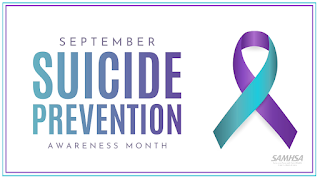School Safety Information
This isn't a topic that we often post about, because schools are statistically still some of the safest places to be in this day and age. However, several of us recently completed the PREPaRE1 and PREPaRE2 trainings offered by the Department of Psychological Services, which has us thinking about school safety and crisis prevention and intervention.
The PREPaRE trainings were developed by the National Association of School Psychologists (NASP), together with leading national experts in school crisis prevention and response. (By the way, we would absolutely encourage all school administrators to register for the next session of PREPaRE1 training, if you haven't already completed it.) PREPaRE1 is a 1-day workshop that provides a "broad overview of the school crisis team's roles and responsibilities, with a special emphasis on crisis prevention and preparedness." PREPaRE2 is a 2-day workshop that "provides a specific examination of the school-based mental health professionals' roles and responsibilities, with a special emphasis on crisis intervention and recovery." If you'd like to learn more about PREPaRE training, here is the link to the FAQ page from the NASP website.
This article from DistrictAdministration.com, entitled "Tech Doesn't Solve All School Safety Concerns," does a nice job of cautioning us to not become overly reliant on technology for protection. Instead, it offers some excellent suggestions for improving our preparedness, including the following:
"Student supervision. Discuss supervision with teachers and support staff. Talk about supervision at drop-off and pick-up areas, in hallways during class changes, in restrooms and stairwells, during breakfast and lunch periods, and in other common areas and hot spots.
Diversify drills. Conduct lockdown drills during lunch periods, between classes or as students arrive in the morning. Use reverse fire drills to time how quickly students and staff return inside after exiting the school. Block an exit, without announcing it to students and staff, to see how they would respond under different conditions.
Plan for evacuations and extended sheltering in place. Identify walking distance to various evacuation sites. Visit those sites and plan how you would set up operations in an emergency.
Practice the “five-minute rule.” Take five minutes at the end of each faculty or cabinet meeting to discuss one aspect of your emergency plans. Create a culture of regular safety conversations.
Create and test crisis communications plans. Parent-notification mechanisms, media-response plans and social media strategies are a part of many school preparedness measures today."
The PREPaRE trainings were developed by the National Association of School Psychologists (NASP), together with leading national experts in school crisis prevention and response. (By the way, we would absolutely encourage all school administrators to register for the next session of PREPaRE1 training, if you haven't already completed it.) PREPaRE1 is a 1-day workshop that provides a "broad overview of the school crisis team's roles and responsibilities, with a special emphasis on crisis prevention and preparedness." PREPaRE2 is a 2-day workshop that "provides a specific examination of the school-based mental health professionals' roles and responsibilities, with a special emphasis on crisis intervention and recovery." If you'd like to learn more about PREPaRE training, here is the link to the FAQ page from the NASP website.
This article from DistrictAdministration.com, entitled "Tech Doesn't Solve All School Safety Concerns," does a nice job of cautioning us to not become overly reliant on technology for protection. Instead, it offers some excellent suggestions for improving our preparedness, including the following:
"Student supervision. Discuss supervision with teachers and support staff. Talk about supervision at drop-off and pick-up areas, in hallways during class changes, in restrooms and stairwells, during breakfast and lunch periods, and in other common areas and hot spots.
Diversify drills. Conduct lockdown drills during lunch periods, between classes or as students arrive in the morning. Use reverse fire drills to time how quickly students and staff return inside after exiting the school. Block an exit, without announcing it to students and staff, to see how they would respond under different conditions.
Plan for evacuations and extended sheltering in place. Identify walking distance to various evacuation sites. Visit those sites and plan how you would set up operations in an emergency.
Practice the “five-minute rule.” Take five minutes at the end of each faculty or cabinet meeting to discuss one aspect of your emergency plans. Create a culture of regular safety conversations.
Create and test crisis communications plans. Parent-notification mechanisms, media-response plans and social media strategies are a part of many school preparedness measures today."




Comments
Post a Comment